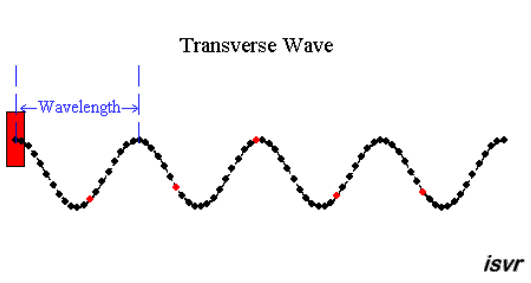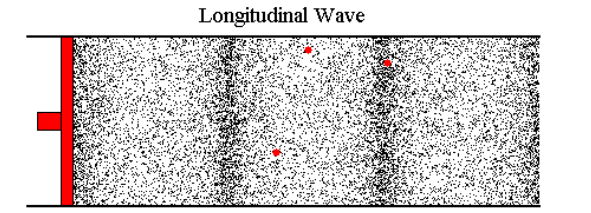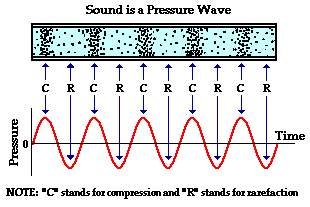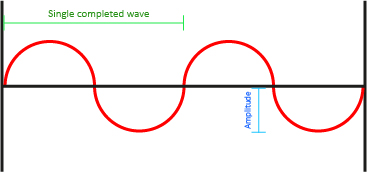There are different types of waves that are specific to different things.
Transverse Waves

Transverse waves are oscillations across particles that are travelling perpendicular to the direction of energy transfer. An example of this could be if a hand was moving up and down whilst holding the string. Whilst the hand, providing kinetic energy, moves up and down, the waves from left to right. Things like light travel in transverse waves.
Longitudinal Waves

Longitudinal waves are oscillations across particles that travel in the same direction that the energy transfer is travelling in. An example could be if two people were holding both an end of a slinky each and one person motioned their hand forwards. The coils would also travel forwards towards the other end before travelling back in the opposite direction. Things like sound travel in longitudinal waves.
Sound waves can also be referred to as pressure waves as they consist of compressions and rarefactions in a repeating pattern as the oscillations travel.

Principles of Sound
> An echo is a general term for a delay of sound.
> Reverberation is the prolonged existence of a sound that occurs after the original sound, overall making it seem echoed and vast – depending on the size of the pace of which the sound is made in.
When waves are displayed on an oscilloscope, the aspects of the image convey different things.

The height of an oscillation is called the amplitude and represents how loud or quiet a sound is. This is measured in decibels (dB)
The amount of completed waves on an oscilloscope represents the frequency of the sound. For instance, on this oscilloscope, there are only two completed waves. In terms of sound, the higher the frequency, the higher the pitch and vice versa. This is measured in hertz (Hz).
The auditory range for humans is 20Hz to 20kHz (20,000Hz). In fact, increasing frequencies are used within music and soundtracks to create anxiety throughout various forms of interactive media.
Thanks for reading ~
